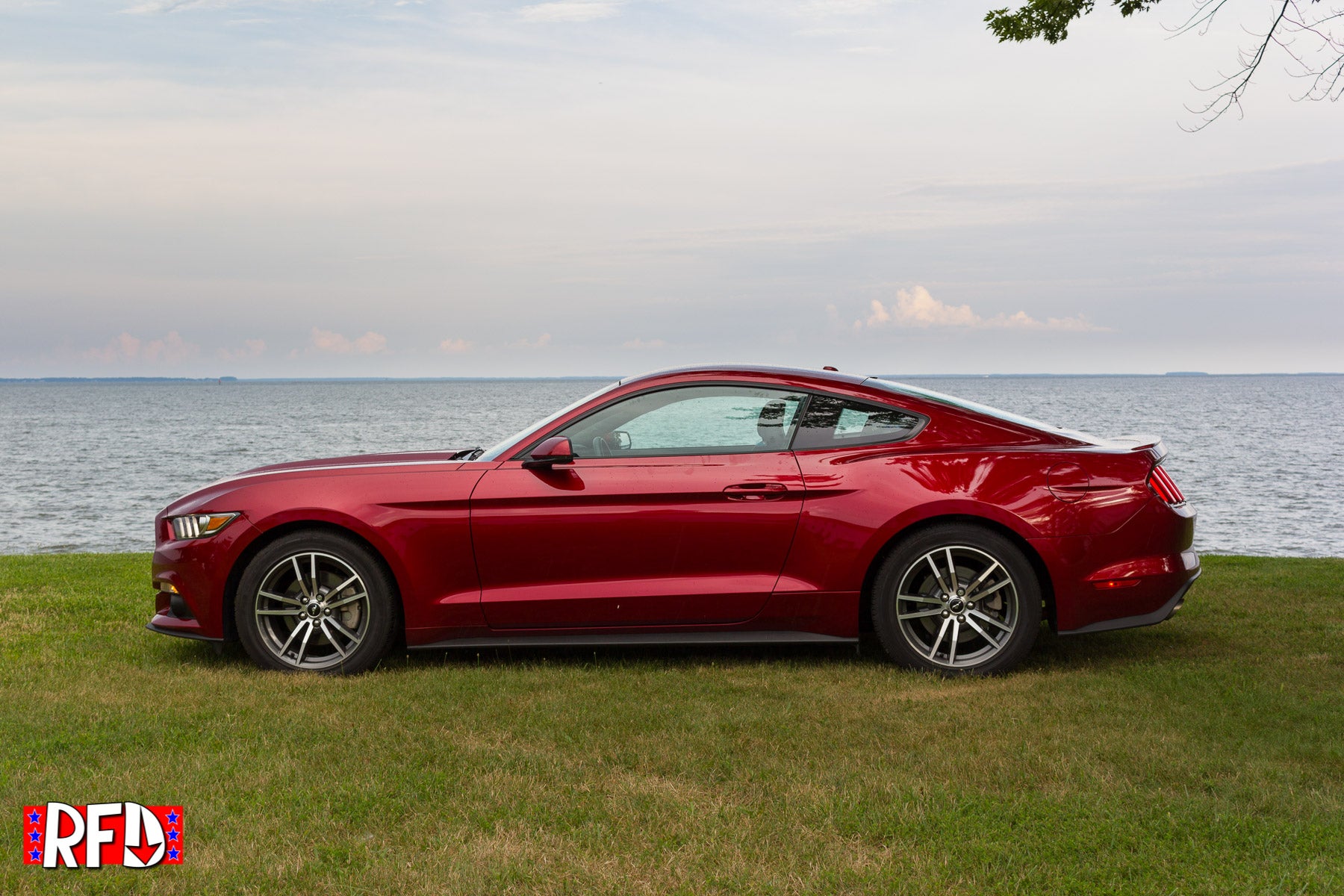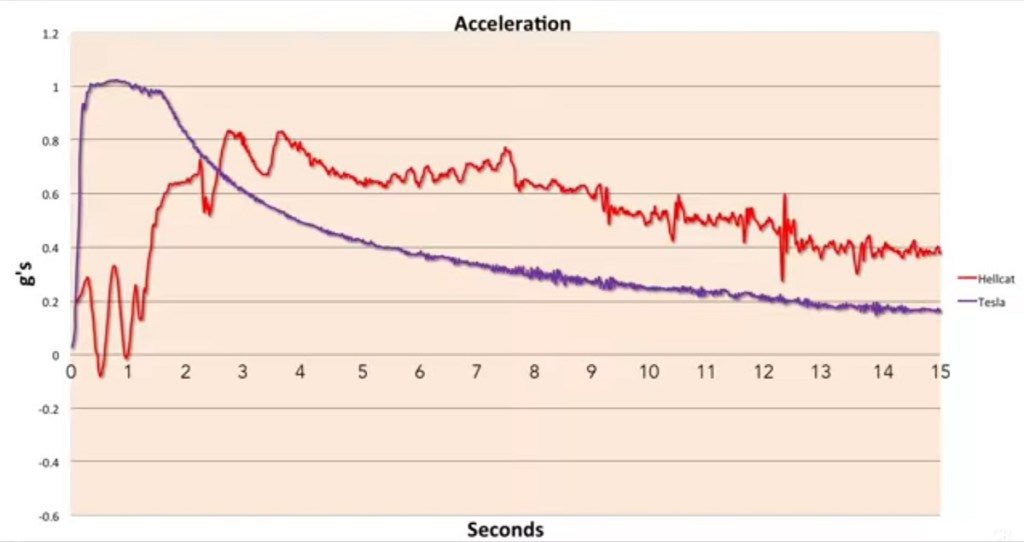 "Justin Hughes" (justinhughes54)
"Justin Hughes" (justinhughes54)
01/04/2017 at 10:44 ē Filed to: Mustang, ford mustang, Hybrid
 0
0
 8
8
 "Justin Hughes" (justinhughes54)
"Justin Hughes" (justinhughes54)
01/04/2017 at 10:44 ē Filed to: Mustang, ford mustang, Hybrid |  0 0
|  8 8 |

(Iíd like to point out that I posted this on !!!error: Indecipherable SUB-paragraph formatting!!! yesterday afternoon, despite some eerie similarities to this morningís FP article - check the timestamps yourself...)
Ford announced in !!!error: Indecipherable SUB-paragraph formatting!!! that not only are they caving on President-Elect Trumpís demands not to move all small car production to Mexico, theyíre also starting a big push on hybrid versions of additional models, including the Mustang. Yes, a hybrid Mustang. Itís official Ė hell has, in fact, frozen over.

Is this the end of the
world
Mustang as we know it? Is the powerful pony car destined to become a boring appliance like a Prius? Iím donít think so. The current Mustang
!!!error: Indecipherable SUB-paragraph formatting!!!
and
!!!error: Indecipherable SUB-paragraph formatting!!!
are both excellent enthusiast cars. Iím not saying that to suck up to RFDís Owner and Editor-in-Chief, who are both long time Mustang fans, but because I used to not be a Mustang fan, and
!!!error: Indecipherable SUB-paragraph formatting!!!
converted me into one.

My first experience actually driving a hybrid car was Justin Abideís
!!!error: Indecipherable SUB-paragraph formatting!!!
last year. It was certainly no second coming of the enthusiast favorite CRX Si, but it wasnít nearly as boring as I expected. You can read the review for my full opinion of the car, but the biggest surprise to me was the performance of the hybrid powerplant. This was the first use of Hondaís Integrated Motor Assist hybrid system, which literally sandwiches an electric motor between the gasoline engine and transmission to either contribute to forward motion, or to recharge the battery assist for later use as a generator. Having owned and driven several EF Civics and CRXs I was accustomed to keeping the revs high to squeeze every last bit of power out of those D-series motors. But surprisingly, the 73hp Insight made more torque from its combined electric and 1.0 liter three cylinder gas motors than the classic Si (and
!!!error: Indecipherable SUB-paragraph formatting!!!
) D16A6, generating around 100hp depending on the year. For perspective, my damn motorcycle, a Honda Shadow ACE 1100, has a larger displacement engine than that Insight, and identical torque Ė 66lb/ft without electric assist. But when
VTEC
IMA kicks in, the electric motor boosts torque to 91lb/ft, and itís a difference you can feel. I had to adjust my typical Honda driving habits to run one gear higher than normal, because the electric torque would get me up the hill, out of the corner, or onto the highway better than a screaming CRX Si.
Read on Right Foot Down or continue below
Ford claims that the upcoming hybrid Mustang ďwill deliver V8 power and even more low-end torque.Ē My experience with the Insight validates Fordís claims on a small scale. The beauty of electric motors is that they generate maximum torque from a standstill. This is why a Teslaís acceleration is often compared to the current king of internal combustion acceleration, the Dodge Challenger Hellcat (and its Charger cousin). But a test by Consumer Reports , of all places, was the most interesting to me, because it demonstrates exactly HOW each car accelerates.
!!! UNKNOWN CONTENT TYPE !!!
The video is worth watching all the way through, but Iím going to cut to the chase and show you the chart that clearly demonstrates the difference between electric and internal combustion acceleration.

The all electric Tesla has instant-on acceleration, maxing out at 1.02G. Thatís right, the force you feel inside a Tesla at full tilt is greater than the pull of gravity itself. The Hellcat, meanwhile, only managed 0.83G in the same test. The graph clearly shows how the two wheel drive Challenger struggled to find grip off the line, which is exactly where the all wheel drive electric Tesla had all of the advantages. The cards were very much stacked against the Dodge for the hole shot.
But look what happens later. The Teslaís acceleration rate drops off sharply after two seconds, which is exactly where the Challenger manages to hook up. By three seconds, the Hellcat is accelerating much harder, and despite the acceleration being less consistent than the Teslaís Ė no doubt still struggling for traction Ė it has the advantage for the entire rest of the test. We canít really call it a race, partly because Consumer Reports doesnít, and partly because we donít know how much distance each car traveled during the 15 second tests. On a traditional drag strip, the Tesla would totally own the Hellcat off the line, but the Hellcat would soon begin to catch up all the way to the finish. Which car would eventually win depends entirely on exactly how far away that finish line is. A Tesla P85D can do a traditional 1/4 mile in !!!error: Indecipherable SUB-paragraph formatting!!! , while the Challenger Hellcat does it in !!!error: Indecipherable SUB-paragraph formatting!!! . That final trap speed confirms Consumer Reportsí findings Ė that the Hellcat is accelerating much harder toward the end of the run than the Tesla. At the finish line, the Hellcat is strongly pulling away, despite its narrow time victory.

This begs the question Ė why not both? In other words, a hybrid. That unexpected grunt I felt in the Insight was the electric motorís specialty, low end torque, as compared to a small gas engine. So why not take a huge internal combustion engine, which works better at higher engine speeds, and add Tesla levels of electrification? That should get it off the line as quick as a Tesla and into the internal combustion engineís sweet spot faster. And thatís the idea behind, as
The Grand Tour
calls it, the Holy Trinity Ė the Porsche 918, the McLaren P1, and the Ferrari La Ferrari.
The first episode did what Top Gear could never do Ė test these three cars head to head. But independently of Top Gear , Chris Harris got his hands on them sooner. If you have some time to burn, this nearly hour long video is worth a watch, and you donít even need Amazon Prime to see it.
!!! UNKNOWN CONTENT TYPE !!!
Weíve strayed pretty far from the original subject of a hybrid Mustang, so letís get back to it. Besides, all this information is important to put this car into the proper context. Hybrid cars started as a way to use smaller engines and less gas without sacrificing power when you need it. Some time ago, there was another invention that worked in a similar way Ė the turbocharger.

Hear me out on this one. Yes, the primary purpose of a turbo is to cram more air into the engine, allowing you to add more gas for more boom and more power. Thatís, like, the opposite of fuel economy. But when youíre just cruising down the road, youíre not using that extra power. Thereís little, if any, boost present under normal street driving conditions. Thatís why manufacturers started putting them into non-performance cars, rather than just boosted monsters like the Subaru WRX and Mitsubishi Evo. Arguably, cars like these were the gateway from race to street applications, since manufacturers were required to build a few thousand street versions of their rally cars to be eligible to run them in the World Rally Championship. Other brands, like Volvo and Saab, also used turbos to hop up their cars performance a bit. Turbos became a common technique to make pretty much any car go faster, from a Volkswagen (nearly all models) to a Buick (the Grand National was rumored to be killed because it would soon be faster than the Corvette in the 1/4 mile).
!!! UNKNOWN CONTENT TYPE !!!
But recently, with increasingly strict fuel economy and emissions standards, turbos have become a way for manufacturers to downsize the displacement of their engines without giving up the horsepower when you need it. Volkswagen was a trendsetter here, offering 1.8T models alongside comparably performing VR6 models. The 1.8T was actually faster in any competition involving going around corners, since itís a smaller, lighter engine than the VR6. Iíve driven Fords with three different EcoBoost motors Ė the 2.0 in the !!!error: Indecipherable SUB-paragraph formatting!!! , the 2.3 in the !!!error: Indecipherable SUB-paragraph formatting!!! , and the mighty 3.5 in my wifeís !!!error: Indecipherable SUB-paragraph formatting!!! . All of these motors feel like they have two more cylinders than they actually do. Lag is minimal or non-existent, as these are small turbos that spool quickly to deliver a good mid-range punch as well as increase horsepower. The 2015 Mustang EcoBoost I drove made 310hp, a figure only achieved by the V8 GT just a few years before, yet gave me 31.2 MPG on the highway drive home from Black River Stages. It really was the best of both worlds.

I feel the same may be true of a hybrid Mustang. Itís technology that can be use to improve both power and fuel economy at the same time. Imagine an EcoBoost Mustang with an additional hybrid drivetrain. It could supply more torque to the rear wheels along with the turbo motor. Or the front wheels could gain electric motors, creating an all wheel drive Mustang with even more oomph off the line. The idea of an all wheel drive Mustang isnít that far fetched. Beyond Ken Blockís famous Hoonicorn, Harry Ferguson Research proposed an all wheel drive version of the Mustang to Ford all the way back in 1965. You can read all about it in
!!!error: Indecipherable SUB-paragraph formatting!!!
(one of my first, by the way). In a
Jalopnik
AMA, I asked Ken Block if he was aware of Fergusonís car. He was, and this is why the Hoonicorn is billed as ďthe only all wheel drive performance Mustang ever built.Ē Fergusonís conversion was not intended as a performance enhancement, and the word ďperformanceĒ in that claim is Kenís acknowledgement of that fact.
In the same press release, Ford also announced ďTwo new, pursuit-rated hybrid police vehicles.Ē Ford has lost serious taxi company market share since the demise of the Crown Victoria. In Boston nearly every cab I see is a Camry Hybrid. Toyotaís hybrid system makes great sense in a big city. Cabs can crawl along on electric power alone, sipping gas only when they need it. For similar reasons, fuel conscious city police departments used the V6 Chevy Impala and Dodge Charger. Why fire eight cylinders sitting in traffic? Leave the more powerful cruisers for the highway patrol where they can actually use it.

Photo credit: Ford
Hybrid technology could provide the best of both to police departments. City forces would save gas, while highway patrols and rural departments would get that extra acceleration boost they need to take down speeders, all with exactly the same technology. This would allow more standardization, which departments love because they donít have to keep spare wheels and other parts multiple models. As I learned from
!!!error: Indecipherable SUB-paragraph formatting!!!
, whatís good for the police is also good for enthusiasts when it comes to automotive performance.
Some said it was sacrilege for the Mustang to lose its live axle. The result has been a much better handling car. Some said it was sacrilege for the Mustang to get a turbo four cylinder engine (forgetting the SVO of the 1980s). No doubt some will say it is sacrilege for the Mustang to go hybrid. But not me. The way I look at it, if they do it right (and if they donít, some tuner like !!!error: Indecipherable SUB-paragraph formatting!!! will be quick to fix it), a hybrid Mustang would allow the performance benefits weíve seen in hybrid hypercars trickle down to the masses. ďV8 power and even more low-end torque?Ē In the spirit of Mythbusters , Iíd call this myth plausible.
Follow @justinhughes54 on Twitter
 jimz
> Justin Hughes
jimz
> Justin Hughes
01/04/2017 at 10:52 |
|
Ford announced in a press release that not only are they caving on President-Elect Trumpís demands not to move all small car production to Mexico,
I hope this was tongue-in-cheek, because itís not at all accurate. Focus is still going south, but to Hermosillo (actually back to Hermosillo, since thatís where the original 2000MY Focus was built.) The San Luis plant was cancelled because car sales (especially compact cars) are in free-fall and building an entire plant to make a car that fewer and fewer people are buying was a foolís errand.
 Justin Hughes
> jimz
Justin Hughes
> jimz
01/04/2017 at 11:05 |
|
Definitely tongue in cheek. Unfortunately for Ford, even if they did make their decision for purely economic reasons and not because of Trump like they claim, it still looks to the world like they caved to his demands. Thereís really no way out of that.
Personally, I find the idea of a hybrid Mustang even more shocking. *ba bum CHING*
 Xyl0c41n3
> Justin Hughes
Xyl0c41n3
> Justin Hughes
01/04/2017 at 11:34 |
|
Slow down there, bud. You werenít the first one to post about the hybrid Mustang yesterday. LongbowII had you beat by several hours and the FP authors could have seen it without leaving the kinjaverse. Despite that, I donít think this was another case of the FP stealing stories from Oppo/Opponauts. Kristin Lee isnít Justin Westbrook, after all.
Everyone else in the media world yesterday, whether an automotive journalist or not, was buzzing with how Trump made Ford save American jobs (even though thatís not what really happened). Itís not surprising at all that it took a few more hours for a FP author to actually dig into the entirety of the Ford press release, find the Mustang nugget, and do a real write-up on it.
 Justin Hughes
> Xyl0c41n3
Justin Hughes
> Xyl0c41n3
01/04/2017 at 11:40 |
|
Oh, Iím not accusing Kristen or anyone else of plagiarism. Fordís press release was public, so everyone writing about Trump, a hybrid Mustang, or whatever else probably got their info from there rather than ripping each other off. Iím more amused than anything that Kristen and I said basically the same thing.
 Wheelerguy
> Justin Hughes
Wheelerguy
> Justin Hughes
01/04/2017 at 12:22 |
|
First, let me just say that Harrisí triple test there held well and aged well. Second, because Harris went for flying laps while GT, c/o DíAmbrosio, went for standing start, the picture of the pace of the three cars changes dramatically (it also helps that Harris has pretty much slept with the three cars in the many times heís driven them. Lucky fucking bastard. Truly the Heir of Dusfold.)
Second, itís more surprising that Ford was the one who came up with the idea at all. Iíd have expected Audi to hybridize their TT a year or two ago.
 Justin Hughes
> Wheelerguy
Justin Hughes
> Wheelerguy
01/04/2017 at 13:47 |
|
First, I completely agree.
Second, Iím not so sure. VWís been all about ďClean DieselĒ rather than electric or hybrid until recently. Even now, theyíre discontinuing the existing Jetta hybrid. But I expect big things from their (legally mandated) big push toward electrification. I wouldnít be surprised if the R8 got the performance hybrid treatment before the TT, but it may trickle down. And imagine a hybrid Golf R. No more criticism over the Haldex center diff - make it a souped up GTI in the front with electric motors in the back kicking in as needed.
 pip bip - choose Corrour
> Justin Hughes
pip bip - choose Corrour
> Justin Hughes
01/04/2017 at 17:37 |
|
hybrid mustang? NOPE!
 Justin Hughes
> pip bip - choose Corrour
Justin Hughes
> pip bip - choose Corrour
01/05/2017 at 09:49 |
|
People like you are why I hope they never drop the V8 option. Itís people like you who prevented the Mustang from becoming the Probe, which was originally designed to replace it. *shudder*